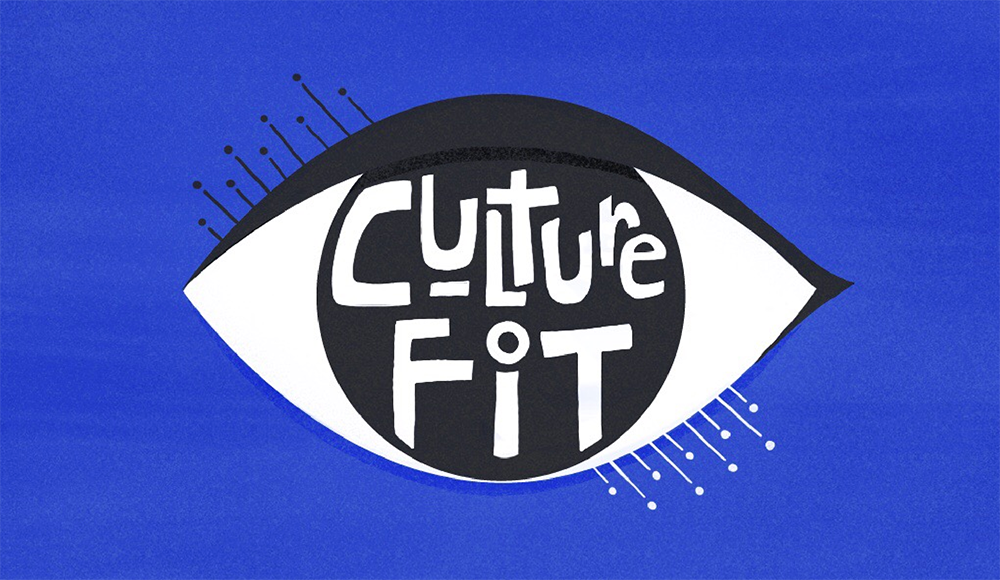Is Hiring for Culture Fit Holding You Back?

Hiring is tough. Finding candidates who perfectly fit in with your company and its culture is tougher. We get it. But is it really necessary that your candidate fits your company culture? Not exactly. Let us tell you why.
A company’s culture isn’t tangible, and yet organizational leaders can spend a lifetime trying to pin down this elusive energy so they can use it to define their companies and their employees. It’s for good reason: Research suggests that an effective culture can account for 20-30 percent of the difference in corporate performance between leading organizations and their culturally unremarkable competitors. Research has also linked a strong organizational culture to higher customer satisfaction.
So we can all agree on one thing: Culture matters. But culture fit? Not so much.
In the book Bossypants, comedian and writer Tina Fey talks about the things she learned from Lorne Michaels, the producer of Saturday Night Live. One lesson she mentions on culture is: “Don’t hire anyone you wouldn’t want to run into in the hallway at three in the morning.”
This is the problem. To many people, culture fit means “I like them and want to hang out with them.” It’s easy to assume that hiring someone who fits your culture means hiring someone whose personality is similar to your own. But that’s not what the term “culture fit” means, and this is not the lesson you should take from it. As much fun as it would be to hang out with your friends at work, you shouldn’t just look for candidates who like Hamilton as much as you or candidates you’d like to hang out with on a Sunday.
Hire someone on the strength of their skills and monitor for cultural strength later. If you insist on searching for something aspirational during a short job interview, look for a value fit.
What you should have in common with the people you work with isn’t personality, but values. What you want are candidates who share the same motivations and vision as you, not necessarily candidates who have similar educational backgrounds and working styles. Hiring for value fit also means that you won’t end up building a nearly homogenous workforce. Instead, you’ll be more likely to recruit people from diverse backgrounds with a wide range of skills and experiences, all organized around a shared mission.
You work so hard to remove the hiring bias from your interview process. You use tools to make your job descriptions gender-neutral and to make certain fields invisible so that you can conduct a blind hiring process. You use an ATS system with structured feedback forms to make interviews fairer. And then you throw it all out the window when the culture-fit question comes around with its free-flowing conversations and methods of madness. It’s funny, isn’t it? How can you measure the culture fit of a person in a single conversation, especially now, when video interviews are interrupted by bad internet and needy puppies? The hiring bias you worked so hard to eliminate comes in and colors the conversation regardless.
Research shows us that unconscious bias is the brain using shortcuts (like prior experience) to make quick decisions. Even though a candidate might be perfect for the position, you might be prejudiced against them because they resemble your kindergarten math teacher, whom you disliked. You might even reject them because of this pointless prejudice.
Another disadvantage of a free-flowing culture-fit conversation is that you cannot compare one candidate to another. Any attempt to compare candidates will be unfair because a free-flowing conversation means you won’t cover the same types of information with both candidates.
So, What Can You Do to Check for Value Fit?
- You can do what Google does: rely on a combination of structured interviews and cognitive ability tests, along with a concise hiring rubric, to hire candidates. In following Google’s example, you would establish standard questions like “Tell me how you react when dealing with a frustrated customer,” write sample answers, and rank potential responses on a scale of 1-10, with 10 being the best value fit of all time and 1 being a big no.
- Have someone outside the team interview your candidate. For example, if you’re hiring for a legal role, have someone from sales talk to the candidate. A more collaborative approach to the entire process allows you to leverage outside perspectives, which might be just what you need to combat unconscious biases.
Looking for the perfect candidate — and eliminating hiring bias — can be back-breaking work, so you should probably dedicate your time to that and leave the mundane recruiting tasks like scheduling interviews and collecting interview feedback to a smart HR system like Freshteam. It can automate a number of tasks, like resume parsing, screening, interview scheduling, and more, giving you time to focus on perfecting your unbiased hiring strategy. You can try Freshteam now for free here.
This article by Freshteam is adapted from the original article that first appeared on the Freshteam blog.
Recruiter.com regularly features reviews, articles, and press releases from leading businesses. This featured article may include paid promotion or affiliate links. Please make every effort to perform due diligence when selecting products and services for your business or investment needs and compare information from a variety of sources. Use this article for general and informational purposes only.

